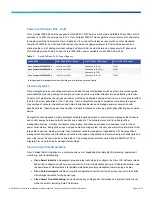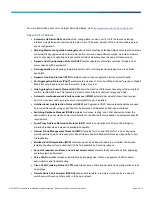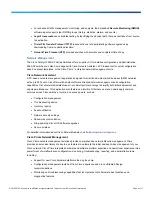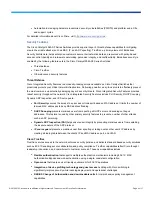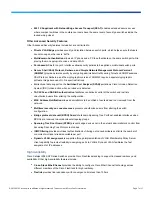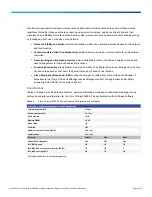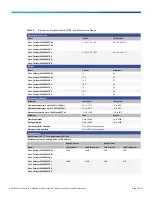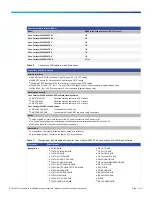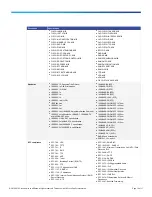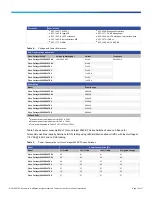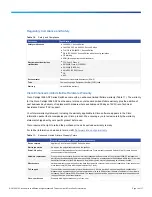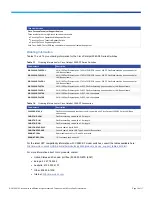
© 2012-2013 Cisco and/or its affiliates. All rights reserved. This document is Cisco Public Information.
Page 4 of 17
For more information about Cisco Catalyst SmartOperations, visit
http://www.cisco.com/go/smartoperations
.
Ease-of-Use Features
Ɣ
Automatic QoS (AutoQoS)
simplifies QoS configuration in voice over IP (VoIP) networks by issuing
interface and global switch commands to detect Cisco IP phones, classify traffic, and help enable egress
queue configuration.
Ɣ
Stacking Master configuration management
and Cisco FlexStack stacking helps ensure that all switches
are automatically upgraded when the master switch receives a new software version. Automatic software
version checking and updating help ensure that all stack members have the same software version.
Ɣ
Dynamic Host Configuration Protocol (DHCP)
autoconfiguration of multiple switches through a boot
server eases switch deployment.
Ɣ
Auto-negotiation
on all ports automatically selects half- or full-duplex transmission mode to optimize
bandwidth.
Ɣ
Dynamic Trunking Protocol (DTP)
facilitates dynamic trunk configuration across all switch ports.
Ɣ
Port Aggregation Protocol (PAgP)
automates the creation of Cisco Fast EtherChannel
®
groups or Gigabit
EtherChannel groups to link to another switch, router, or server.
Ɣ
Link Aggregation Control Protocol (LACP)
allows the creation of Ethernet channeling with devices that
conform to IEEE 802.3ad. This feature is similar to Cisco EtherChannel technology and PAgP.
Ɣ
Automatic media-dependent interface crossover (MDIX)
automatically adjusts transmit and receive
pairs if an incorrect cable type (crossover or straight-through) is installed.
Ɣ
Unidirectional Link Detection Protocol (UDLD)
and Aggressive UDLD allow unidirectional links caused
by incorrect fiber-optic wiring or port faults to be detected and disabled on fiber-optic interfaces.
Ɣ
Switching Database Manager (SDM)
templates for access, routing, and VLAN deployment allow the
administrator to easily maximize memory allocation to the desired features based on deployment-specific
requirements.
Ɣ
Local Proxy Address Resolution Protocol (ARP)
works in conjunction with Private VLAN Edge to
minimize broadcasts and maximize available bandwidth.
Ɣ
Internet Group Management Protocol (IGMP)
Snooping for IPv4 and IPv6 MLD v1 and v2 Snooping
provide fast client joins and leaves of multicast streams and limit bandwidth-intensive video traffic to only
the requestors.
Ɣ
Multicast VLAN Registration (MVR)
continuously sends multicast streams in a multicast VLAN while
isolating the streams from subscriber VLANs for bandwidth and security reasons.
Ɣ
Per-port broadcast, multicast, and unicast storm control
prevents faulty end stations from degrading
overall systems performance.
Ɣ
Voice VLAN
simplifies telephony installations by keeping voice traffic on a separate VLAN for easier
administration and troubleshooting.
Ɣ
Cisco VLAN Trunking Protocol (VTP)
supports dynamic VLANs and dynamic trunk configuration across
all switches.
Ɣ
Remote Switch Port Analyzer (RSPAN)
allows administrators to remotely monitor ports in a Layer 2
switch network from any other switch in the same network.



